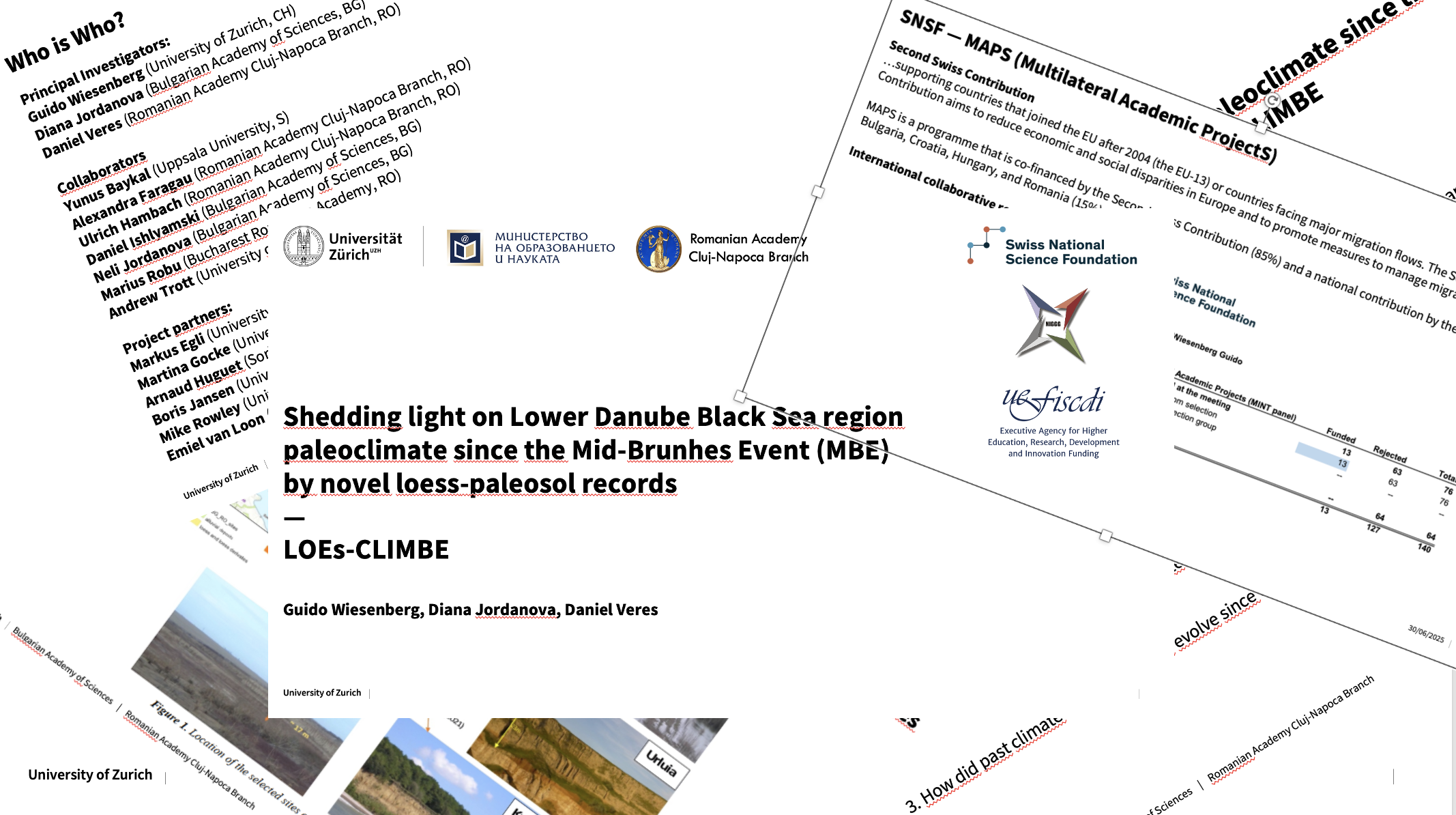Shedding light on Lower Danube Black Sea region paleoclimate since the Mid-Brunhes Event (MBE) by novel loess-paleosol records - LOEs-CLIMBE
Accurate assessment of past climatic changes is key to understanding recent climate variability and predicting future ecosystem response to environmental changes. Classical paleoclimate archives include ice cores, marine, lake, and peat sedimentary sequences and speleothems. However, most of these archives allow only indirect assessment of terrestrial ecosystem responses to climate change as organic and inorganic matter are modified during transport, reflecting a mixture of global (ice cores), regional (marine) or local processes (peat and lakes). Past Quaternary climate change can instead be accurately interpretated in terrestrial systems from loess paleosol sequences (LPS), which directly record local (e.g., shifts in vegetation types and dust production and/or sedimentation rates) to regional or even intercontinental (distal sediment sources) climatic and environmental signals. LPS archives have been frequently studied in central Europe and the Middle Danube basin or in the Chinese Loess Plateau. However, the LPS have received significantly less attention in the Lower Danube Black Sea (LDBS) region despite it being a key area surrounded by the Carpathians, the Black Sea, and the eastern Mediterranean that strongly influence climate, sedimentation and soil characteristics. This area is even more intriguing as the classical paleoclimatic archives in the region, such as the sedimentary archives in the eastern Mediterranean or Black Sea, speleothems in the wider region and LPS in the Middle Danube basin reveal partially contradictory climate developments during the last 400 kyr. We now propose to address this apparent contradiction by investigating several LPS in the Danube basin. We now propose to address this apparent contradiction with our project aiming at assessing past Quaternary climate change across a transect of terrestrial LPS records spanning several glacial-interglacial cycles. The study area borders the LDBS region and has been subject to several modes of atmospheric circulation patterns that affect the eastern Mediterranean, central Europe, and western Eurasia. This location thus provides the unique opportunity to investigate the interplay of these atmospheric circulation and moisture-delivering patterns through time and assess different environmental conditions and soil response to past environmental change. We propose a high-resolution multiproxy study on four LPS along a north-south transect in Bulgaria and Romania combining the expertise of our research partnership in geochemical, paleoclimatic and environmental research. We rely on detailed field descriptions in combination with up-to-date sedimentological, mineralogical, magnetic, geochemical, and stable isotopic (d13C, d18O) fingerprinting. These more classical techniques will be supported by partially novel and rarely applied techniques in LPS research like (i) biomarker analyses for paleovegetation and paleoenvironment assessment in combination with compound-specific d2H analyses for past hydroclimatic reconstruction, (ii) rarely used 10Be and 26Al dating alongside tephrochronology and luminescence dating for more precise age determinations, and finally (iii) unique synchrotron-based investigation of organic matter, calcium, and iron assemblages and their speciation for improved assessment of paleosol formation and their relevance in paleoclimatic research. We will then compare these well-resolved records with the broader archives (sedimentary, speleothem and ice-core data) to obtain comprehensive insights into the dynamics of the Earth Climate System during the last 400 kyr in the LDBS region. Our highly complementary combination of classical with novel (i-iii) techniques in LPS research will provide unique information on past climate evolution in region since the Mid-Brunhes Event, which is key to understand larger scale contexts and discrepancies between neighbouring ecosystems and related paleoenvironmental archives.
Project Funding: Swiss National Science Foundation (SNSF) project 230102

